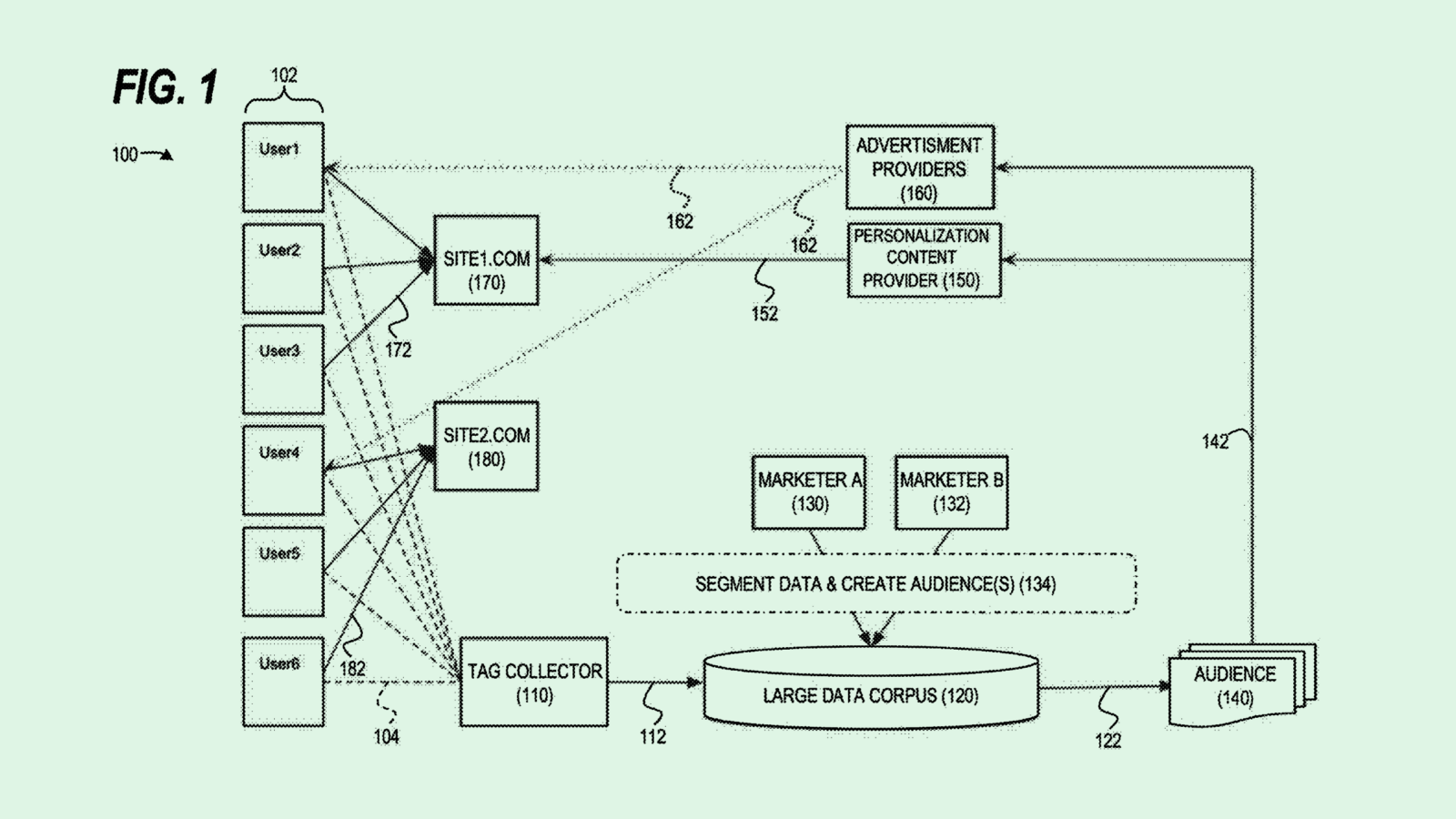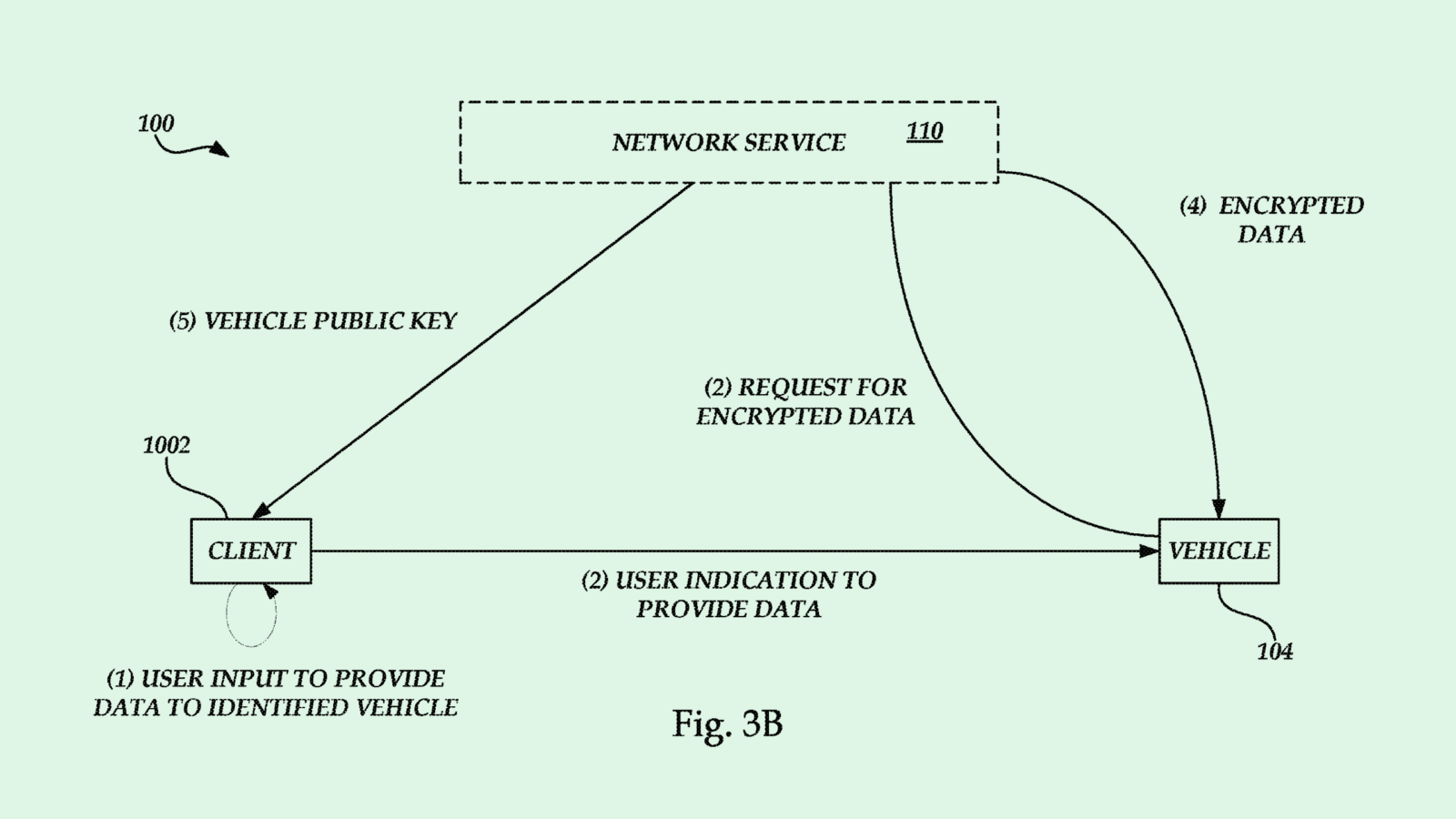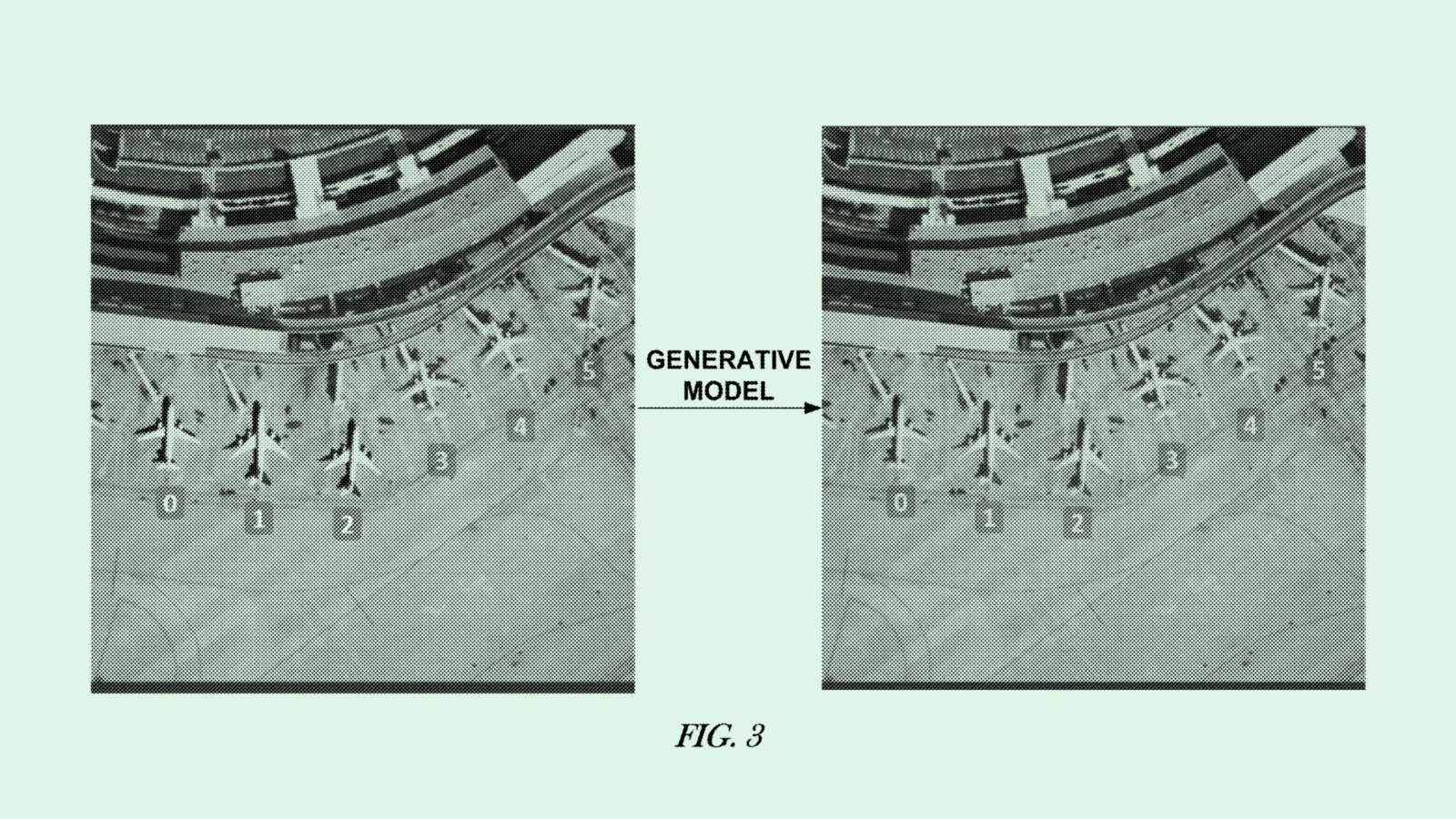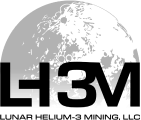Happy Thursday and welcome to Patent Drop!
Today, a Salesforce patent for cookie-free targeted content highlights the alternatives that advertisers can take to the ever-popular bite-sized trackers. Plus: Tesla gets personal, and Raytheon eyes synthetic data.
Before we dive into today’s patents, a word from our sponsor. Lunar Helium-3 Mining CEO Chris Salvino is applying 30 years of eclectic leadership experience to one mission: harvest fuel from the moon for cleaner, safer nuclear energy on Earth. How? His company’s patented moon-mining technology. See how you can become a Lunar Helium-3 shareholder before they leave the launchpad.
And a quick programming note: Patent Drop will not be published on Monday, Aug. 19, but will be back to its regularly scheduled programming on Thursday, Aug. 22.
Let’s take a peek.
Salesforce’s Cookie Substitute
Salesforce is cutting out sugar.
The tech firm filed a patent application for “cookieless delivery” of personalized content. It provides an alternative to browser cookies, or the small files advertisers use to track user behaviors all over the internet.
“Web browser providers are embarking on initiatives to stop user data leaking into the backend,” said Salesforce. “The data cookies carry makes it possible to identify and recognize users later. The only threat cookies may pose relates to user privacy, if the cookies are employed for illicit purposes.”
Instead of using these bite-sized trackers, Salesforce’s system creates a “query index” from a corpus of data that’s filled with several “market segment-based queries,” essentially grouping together similar interests or characteristics. That index is stored within a “browser-executable library,” which can be stored and operated on any browser and operates locally on a user’s device.
That library compares query indexes against “privacy-protected user data,” such as historical browsing data stored locally on a device, to figure out which market segment aligns with that user best. Finally, “when a match or query hit is detected,” this system fires out calls to a “personalized content provider” (i.e., a digital advertiser) to place content accordingly.
Compared to traditional third-party browser cookies, which allow content marketers access to your internet behaviors, Salesforce’s tech processes user-specific data locally, never letting it get into marketers’ hands.

If you’ve ever visited a webpage, you’ve probably seen a pop-up warning you about cookie collection and allowing you to opt out. However, even if you do opt out, you often aren’t entirely free and clear of tracking, said Daniel Barber, CEO and co-founder of data privacy firm DataGrail.
A report released earlier this year by DataGrail that audited roughly 5,000 of the most-visited websites found that around 75% tracked users regardless of consent. Businesses are also able to pick up information about you before you even get to their website, Barber said.
“When you go to a website, your expectation is that when you click ‘necessary cookies,’ only necessary tracking continues. But that doesn’t happen,” said Barber.
An offering like this makes sense coming from Salesforce, said Barber, as it offers a creative, cookie-free alternative for its clients to leverage user data without violating privacy. The problem, however, is that “it’s implying that all of the data is held in Salesforce, which, by default, is a little challenging,” he said. “While lots of things are stored in Salesforce, they might use other services where data is stored, so marketers will still continue to need cookies.”
The better solution is quite simple: less tracking, period, said Sara Geoghegan, counsel at the Electronic Privacy Information Center. If marketers adopted data minimization, in which only necessary information is collected and deleted after use, it would “enable an appropriate amount of data to be collected for functionality without it being an invasion of privacy,” she said.
Plus, a major key to solving the privacy issues presented by third-party cookies may be in Google’s hands, she said. While the tech giant promised in 2020 to block third-party cookies on Chrome, it reneged on the pledge in late July.
“This broken promise underscores why we need meaningful, comprehensive federal privacy rules with enforcement,” said Geoghegan. “Consumers deserve more privacy protections than a pinky-promise from Google or any other big tech company to protect their most personal and sensitive information.”
3 Reasons to Invest in Moon Mining
Lunar Helium-3 Mining is pioneering the path to sustainable nuclear fusion. How? By harvesting Helium-3 from the moon—a resource critical to unlocking nearly limitless nuclear power.
Here’s why you should invest in Lunar Helium-3:
- Expert Leadership: CEO Chris Salvino’s 30 years of leadership and expertise in trauma surgery, aerospace, and mining are an ideal combination to tackle complex problems in the energy sector.
- Innovative Technology: They’ve filed for 7 patents and even applied for a NASA grant, an edge in the $40T fusion market.
- Future-Ready Vision: Cleaner, safer nuclear fusion can lead to more nuclear adoption across the world. That’s potentially limitless renewable energy still untapped.
You can now join this stellar journey.
Invest in Lunar Helium-3 Mining as they work to transform the energy landscape.*
Tesla Digs Deep
Tesla wants to personalize the family ride.
The car maker is seeking to patent a system for “encrypted vehicle data access.” Tesla’s tech allows a user to access customizations within a vehicle that may not be solely owned, such as a family or company car, a rental car, or even a taxi or rideshare service.
“‘Shared’ vehicles are typically not customized or configured with a user’s specific information, preferences or operational parameters,” Tesla said in the filing. This requires a user to either input all of their customizations manually or access them from a “central data repository,” which can be subject to “potential security or data breaches.”
Tesla’s system uses a “network service provider” to handle transmission of user data to the vehicle. The user’s data held within said network is encrypted, and the service provider doesn’t have the key to decrypt it. Instead, only the “target vehicle,” or the one in which the user is riding, is able to decrypt that data. Tesla notes that user data in this context is wide-ranging, including financial information, vehicle usage, operational parameters, profile information, and customization settings.
The transmission of this data could happen automatically when the user selects their target vehicle, Tesla noted, based on things like “user proximity to a selected vehicle, utilization of an app (such as a ride sharing app or taxi app) or utilizing search access via a network connection.”
If the user decides to revoke the vehicle’s access to their data — maybe when they complete their ride — the vehicle will automatically delete their information “or otherwise render the information inaccessible.”

Tesla’s goal has long been making vehicles more and more autonomous. That goal requires a whole lot of data, said Tejas Dessai, research analyst at Global X ETFs. Because of this, “over time, companies will continue to seek a broad range of signals beyond on-road visuals to capture the breadth of driving and behavioral information,” Dessai noted.
“We expect Tesla to continue investing heavily in autonomous capabilities as the wider adoption of robotaxis and sophisticated self-driving features in passenger cars reaches an inflection point,” said Dessai.
This also isn’t the first time we’ve seen Tesla take an interest in personalization. The company previously sought to patent a vehicle “personalization system” that collects user data with the goal of a “humanized in-vehicle experience.” This patent would add a layer of privacy to any personal data that its sensor-packed vehicles collect.
The tech in these patents could also come in handy as Tesla continues to plot (and delay) its robotaxi plan, which will allow Tesla owners to rent out their vehicles in exchange for up to $30,000 a year. Keeping personal vehicle owner data private while also allowing riders to customize their rides may increase comfort with adoption, especially given previous reports that the automaker isn’t the most careful with customer data.
But data aside, many have cast doubt on the company’s plan for autonomous ridesharing. Experts told the New York Times that competition is already fierce in the space, and its technology may not be ready to drive people around without someone in the front seat. Uber CEO Dara Khosrowshahi pointed out on a recent podcast that Tesla owners may not want their vehicles to be “be ridden in by a complete stranger.”
Raytheon’s Synthetic Bet
Raytheon wants to make sure its AI models don’t fall for deepfakes.
The defense contractor filed a patent application for generating an “AI dataset using (a) 3D engine.” This tech essentially aims to beef up machine learning training datasets with synthetic image data.
“Current synthetic imagery and corresponding synthetic imagery datasets suffer from, among other issues … a lack of diversity in backgrounds and object pose and lighting conditions,” Raytheon said in the filing. “This is especially true for rare targets or targets that are hard to find ‘in the wild.’”
Though generative models can create consistent simple imagery, these models often suffer when asked to create something more complex, Raytheon said. Using aerial images as its prime example, this tech aims to create “convincingly realistic but procedural imagery” for datasets to train other AI models.
To do this, Raytheon’s system would combine real satellite imagery with AI-generated images in a 3D editor, using the authentic images as a baseline to give the fake ones “consistent geometry, global illumination, and shadow geometry.” A generative neural network would then refine the images to make them even more realistic, adjusting clarity, lighting, and color.

Raytheon’s tech could allow the firm to generate large, robust datasets of realistic imagery to help train image-based AI models, such as object-recognition tools or classifiers. Plus, by creating refined fake images, this tech could help train its models to detect anomalies and sophisticated deepfakes themselves, said Ashley Manraj, chief technology officer at Pvotal Technologies.
These models can save a ton of labor resources that’d otherwise be spent hunting for anomalies themselves, he said. “Let’s say you get a new set of 10,000 pictures … and you don’t have the time to be analyzing those with human eyes. The power of those models is that they work in parallel [with humans].”
Raytheon’s patent highlights that defense contractors and organizations are taking a rising interest in AI and generative models, with contracts ranging from millions to billions of dollars to fund things like threat-monitoring technology, flight simulation and modeling, and autonomous drones.
But using AI in military contexts can be tricky, said Manraj. AI still faces issues with hallucination and inaccuracies. And in certain models, those mistakes can be amplified over time, he noted. Because “consistency is king,” he said, defense organizations often “don’t prefer AI at very large scales.”
“You can’t afford for the general system to go wrong,” said Manraj. “You have to ensure, as a technology provider, that whatever you do will last for years.”
Extra Drops
- Meta wants to avoid eye fatigue. The company filed a patent application for “pupil-aware eye tracking for eye-safety.”
- Sony wants to manufacture good bedside manner. The company filed a patent for a “nursing care robot.”
- Zoom wants to keep your calls sacred. The company is seeking to patent a system for “securing sensitive information” in an input message.
What Else is New?
- Amazon will test its Prime Air drone delivery service in the U.K. to research the devices’ collision avoidance capabilities.
- Cisco is cutting 7% of its workforce, the company’s second major round of layoffs this year.
- Instagram has failed to control hate speech against women politicians, according to research from the Center for Countering Digital Hate.
Patent Drop is written by Nat Rubio-Licht. You can find them on Twitter @natrubio__.
Patent Drop is a publication of The Daily Upside. For any questions or comments, feel free to contact us at patentdrop@thedailyupside.com.
Disclaimer
*This is a paid advertisement for Lunar Helium-3 Mining, LLC Reg CF offering. Please read the offering circular at https://invest.lh3m.com/.

